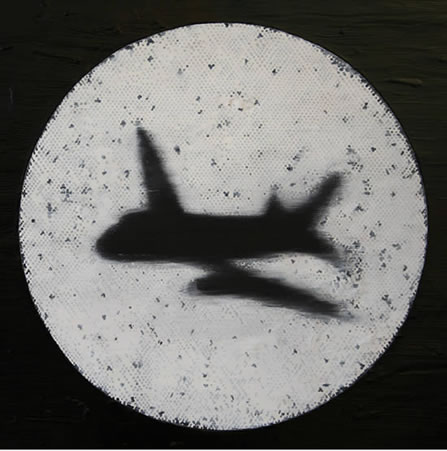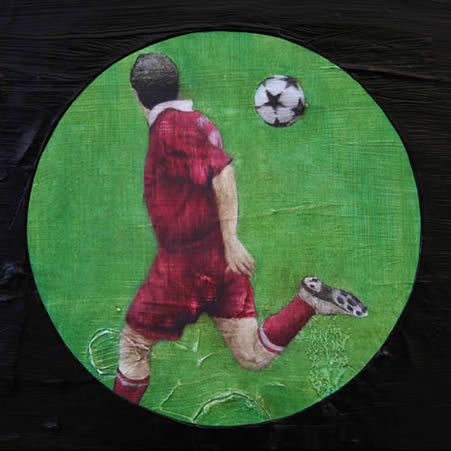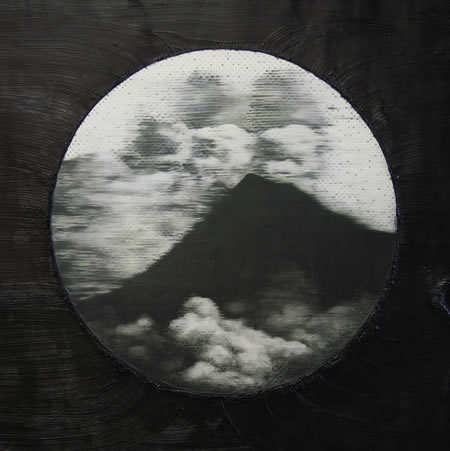
Sarajevo
Oil on canvas, 300 X 150 cm
from the painting series
The Body of the Image

Detail, Sarajevo
from the painting series
The Body of the Image
Detail, Sarajevo
from the painting series
The Body of the Image


Detail, Sarajevo
from the painting series
The Body of the Image

Blue Barren
Oil on canvas, 200 X 150 cm
from the painting series
The Body of the Image

Detail, Blue Barren
from the painting series
The Body of the Image

Detail, Blue Barren
from the painting series
The Body of the Image

Detail, Blue Barren
from the painting series
The Body of the Image

Merapi
Oil on canvas, 300 x 150 cm
from the painting series
The Body of the Image

Detail, Merapi
from the painting series
The Body of the Image

Detail, Merapi
from the painting series
The Body of the Image

THE BODY OF THE IMAGE
The belief in a magical bond that connects
the fate of a wound with that of the weapon
that caused it can be observed, unchanged, throughout millennia.
Sigmund Freud
There is a relationship between the channel-
ing of instincts through a passive reception
of organized sports and the mobilization of
these same instincts in the waging of war.
Both require an identification with the team
or country, an unwavering adherence to
rules (as well as its flip-side, subterfuge),
and the perception of the opponent as
enemy in an identification structure centered
around victory. What is mysterious is the
separation between the vicarious experience
and physical reality; the moment the
imperceptible divide between the active
and passive modes is transgressed.
What does it mean to consume the amount
of media images that we do; are we aware
that we mistake them for reality? Scenes of
human tragedy exist side by side with adver-
tising in commercial broadcasting and on
the web, and we do not find this unsettling;
we are complicit in the information illusion,
we believe that we know something if we've
seen it on TV, on the Internet, in the news-
paper. But beyond the economics and politics
of the global information industry, there is
an even more basic level on which media
imagery seduces us. Freed of material
existence, media images suggest a world
that is more immediate or even more real
than our own.
The paintings of the series The Body of the
Image combine disparate media images,
logos, and fragments of newspaper articles
and reformulate them in new semantic con-
texts. The surfaces of these works are made
up of multiple layers of oil paint cast into
high relief, a topography testifying to a work-
ing process founded in the language of the
painted surface and framing an analogy to
the human body with its vulnerability, its
wounds, and its scars. In keeping with their
intrinsic immateriality, the images are super-
imposed over the irregularity of the paintings'
surfaces; suspended like bubbles on a glossy
black background, they remain isolated from
one another like so many peepholes peering
out onto divergent spheres of voyeuristic
experience.
Due to their extreme enlargement, some of
these images reveal the print screen or digital
resolution they consist of, suggesting a prox-
imity, a getting closer to the essence of some-
thing. In the final analysis, however, it is not,
of course, the atomic or subatomic particles constituting matter that we arrive at, but a
nothingness, a kind of vanishing point beyond
the limits of the visible in which no secret is
revealed and no monads forming existence
are discovered, but a nonsense of individual
pixels and offset dots that remind us that it's
a mere approximation we're seeing – and
that our eyes and minds complete the rest.
How can we sit on our sofas and consume
images of suffering human beings without
suffering ourselves? Why, in the sexual inter-
action with pornographic images, do people
prefer the absence of actual physical contact?
When the body is subtracted from the image,
we enter into a world of fantasy in which we
believe everything can be known and every-
thing is possible -— and in which the camera's
lens enters into a magical bond with the
incomprehensibility of another's existence.